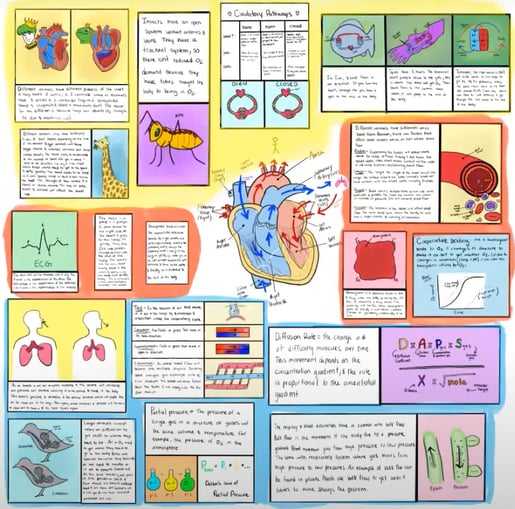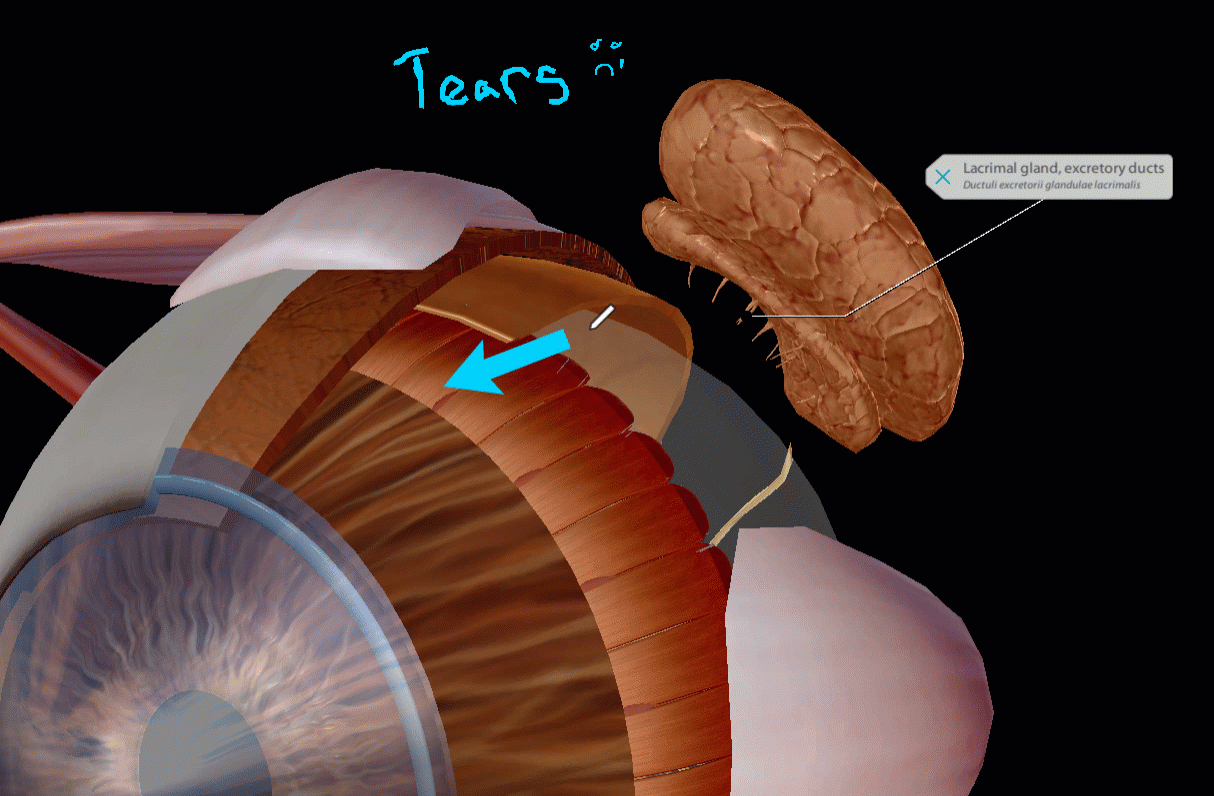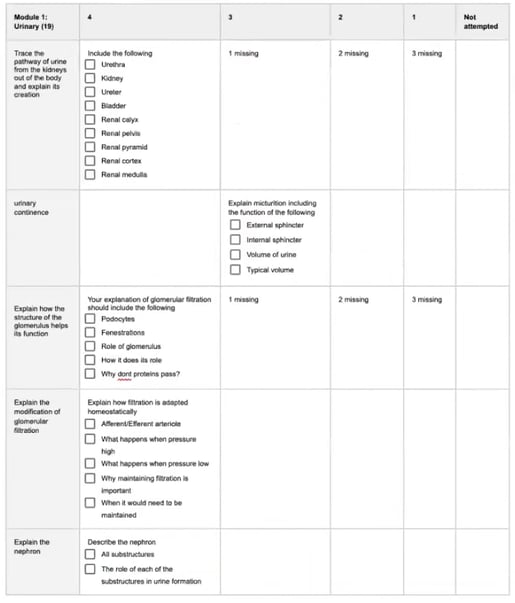Smart Assessments: Moving Beyond Exams with Dr. Cindy Harley
Posted on 4/22/22 by Sarah Boudreau
Visible Body works hard to form a community of educators who support one another and strive for pedagogical excellence, so we were thrilled to have Dr. Cindy Harley talk to us about alternative forms of assessment in the A&P classroom. Dr. Harley is an Associate Professor of Biology at Metropolitan State University, and you might recognize her as the host of the Visible Biology YouTube series.
Today on the Visible Body blog, we’ll recap the fantastic webinar she delivered on alternative assessment, but if you’d like to watch it in full—including a great Q&A and idea generation session—check it out below.
Why stop doing exams?
Like many instructors, Dr. Harley used to set up her courses with exams as the largest grades, with quizzes, labs, and other assignments treated as preparation for those exams.
However, big exams stress students out as they feel the pressure to perform perfectly during a short time frame. Not only do exams cause stress, but they aren’t enjoyable to grade, and as Dr. Harley pointed out, “Exams are not a part of what you need to be a working biologist.”
She wondered if she even needed exams… and she found her answer in the turmoil of spring 2020.
With the future uncertain and in-person instruction put on hold, instructors like Dr. Harley were unsure of what their courses would look like in an online environment. They had concerns about developing and maintaining a classroom community remotely, and when it came to assessment, they were concerned about cheating.
Both Dr. Harley and her students were stressed out as they had to balance school, their lives, and the emerging pandemic. Those interruptions were going to result in a lot of makeup exams, something she hated dealing with.
The chaotic situation made her reassess what she wanted students to get out of the course. She decided that it was most important for students to distill ideas, to link ideas together, and to develop note-taking, peer review, and revision skills. She concluded that traditional exams were not giving students these skills.
Sketch notes
One way Dr. Harley assesses her students’ knowledge in lieu of exams is through sketch notes. In sketch notes, students use visual elements to illustrate concepts, accompanied by minimal text.
Students show their ideas instead of summarizing them, choosing an organizational structure and linking ideas together. Sketch notes ask students to think critically about the content rather than simply memorizing.

A colorful example of sketch notes from one of Dr. Harley's students.
Sketch notes have an added benefit of deterring cheating. Because sketch notes are unique, they are difficult to copy; students must depend on their own knowledge to organize and create their notes.
“I want them to take these big ideas, distill them into the most important concepts, and then link these concepts together, and I want them to organize the information in their brain,” Dr. Harley said. “What this allows the student to do is determine what the story is and how they want to tell it. The way every student organizes it may be different, and that’s okay—you’re helping them to create the organization within their own mind.”
Some students might not feel confident sketching things out by hand. For those students, Visible Body’s drawing tool can be used to annotate the 3D models. Position the model the way you’d like, access the drawing tool where you can add your own drawings and some basic shapes to illustrate these concepts. Save the image by clicking the bottom right icon.

The drawing tool in Human Anatomy Atlas 2022 + can be used to annotate anatomy models.
In Dr. Harley’s class, after students assemble their first drafts of sketch notes, they go through a peer review process. Students are able to revise before turning in their final drafts, offering them an opportunity to add and clarify concepts and develop their knowledge further. Dr. Harley and her students give feedback in audio format as they walk through the sketch notes.
But how do you grade a drawing?
Dr. Harley assembled a rubric based on the different elements she wanted to see in the sketch notes, adding criteria for labeling, description, and explanation as well as what content should be explored. She grades using two rubrics: a style rubric and a content rubric, the latter of which is worth more points.

Dr. Harley's content rubric, image from the Smart Assessments webinar.
Walkthrough videos
Dr. Harley wanted to go beyond labeling structures, so she put her students in the teacher’s shoes.
Students use screen capture apps to record videos as they walk the viewer through a particular system or body part using Visible Body’s apps. Students practice and refine their presentations to produce a polished video under five minutes in length. They use the dissection and drawing functions to aid them in illustrating their points and the Tours feature to smoothly transition between views.

Tours GIF from Human Anatomy Atlas 2022 +.
Dr. Harley says that when using a rubric to check off criteria, grading these videos takes less time than it does to grade a lab report.
We’ve talked on the Visible Body blog before about how explaining concepts to others makes students assess the information, organize it, and pick out key points, deepening their knowledge of the subject. During their careers, students will have to explain concepts to patients, so this assignment also helps them develop explanatory skills.
“The students have been really excited about this because they feel like they’re getting an interesting skill set. I also like it because I feel like they’re making review materials they can use later,” Dr. Harley said.
Want to learn more about how to lecture in 3D? Check out this blog post!
The effects of alternative assessments
One of the biggest takeaways is that students get grades that Dr. Harley feels more accurately reflects their knowledge than traditional assessments.
“I’ve been really excited about trying to think of different ways to get at student knowledge and ways to make me more joyful. I always had students that were getting C’s, and it didn’t match how I felt they should be doing, and now I feel like their grade matches them,” Dr. Harley said.
Students report that they spend a lot of time working on their sketch notes, and some have found them so useful that they use them for note-taking in other classes. They say that sketch notes are more difficult than a normal exam, but they make them feel more able to apply their knowledge.
Even online, students are able to build community through giving audio feedback to each other during peer review. This makes students feel more connected to each other and makes them feel like they’re a part of a class and not just sitting alone at their individual computers.
Wrap-up
A huge thank you to Dr. Harley for sharing how she’s changed assessment in her classroom.
Want to hear more from Dr. Harley? Try this webinar on comparative physiology or check out the Visible Biology YouTube series, where Dr. Harley walks you through biological concepts and processes!
Be sure to subscribe to the Visible Body Blog for more awesomeness!
Are you an instructor? We have award-winning 3D products and resources for your anatomy and physiology course! Learn more here.



